Snipe feeding technique had me puzzled until I did a little research several years ago.
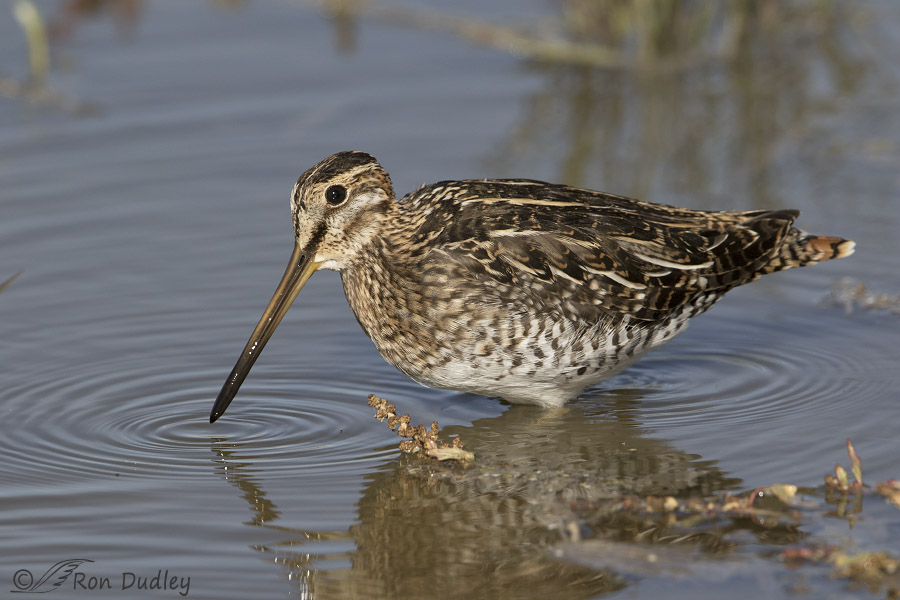
1/2500, f/7.1, ISO 320, Canon 7D Mark II, Canon EF 500mm f/4L IS II USM + EF 1.4 III Extender, not baited, set up or called in
The Wilson’s Snipe is an elusive species so usually I can’t get very close to them but two days ago at Farmington Bay WMA a couple of them came in so close to my pickup that for a while I didn’t even try to focus on them. As a result most of these images are either full frame or cropped very little.
The name “snipe” is derived from “snite,” a variant of “snout,” which refers to their long, very straight bill. That bill is the perfect tool for probing into mud for their primary prey which is small larval insects.
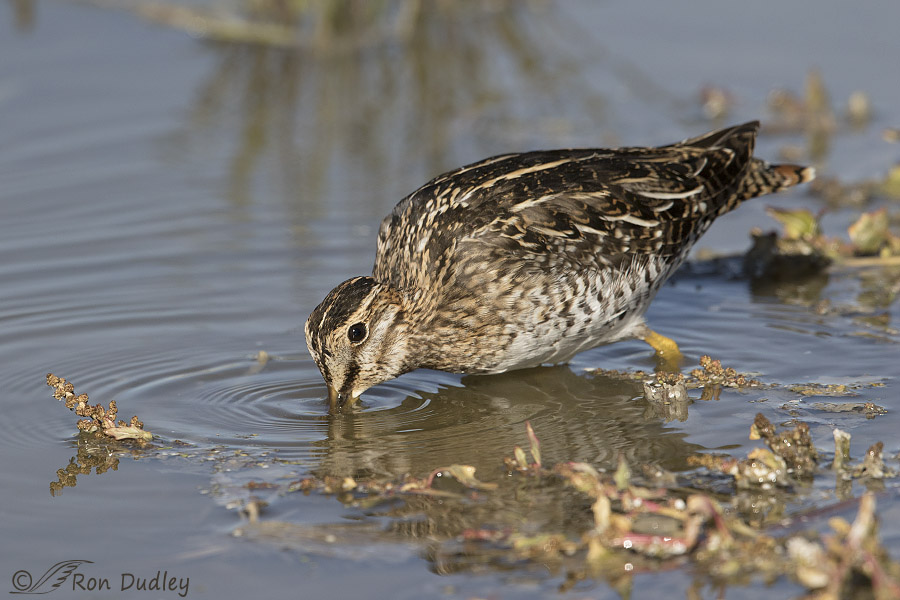
1/2000, f/7.1, ISO 320, Canon 7D Mark II, Canon EF 500mm f/4L IS II USM + EF 1.4 III Extender, not baited, set up or called in
They plunge that long bill into the mud and use sensory pits at its distal end to locate their prey.
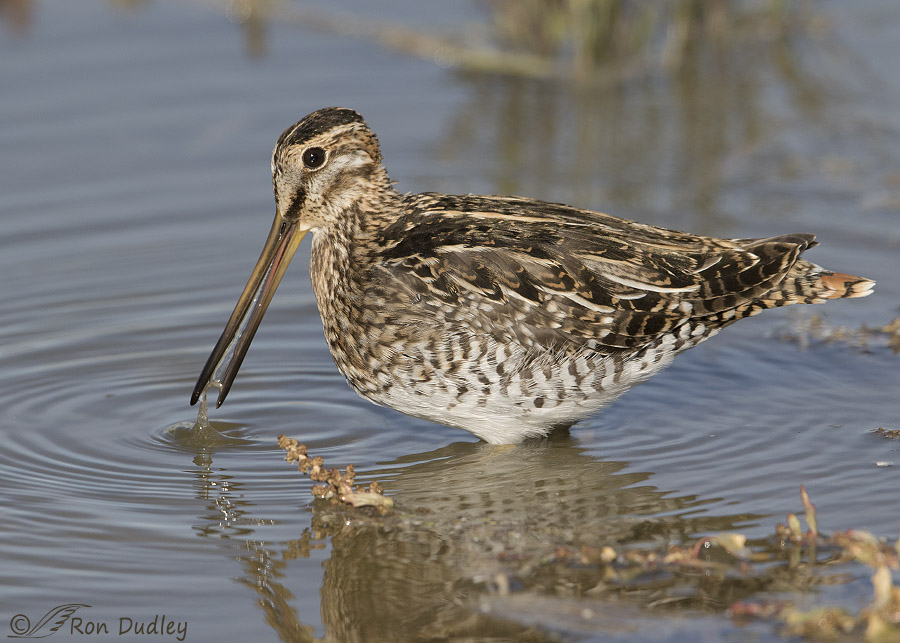
1/2000, f/7.1, ISO 320, Canon 7D Mark II, Canon EF 500mm f/4L IS II USM + EF 1.4 III Extender, not baited, set up or called in
But I seldom see actual prey in their bill even when I make deliberate attempts at capturing it with my camera. This is one of the few times I’ve actually been able to see it.
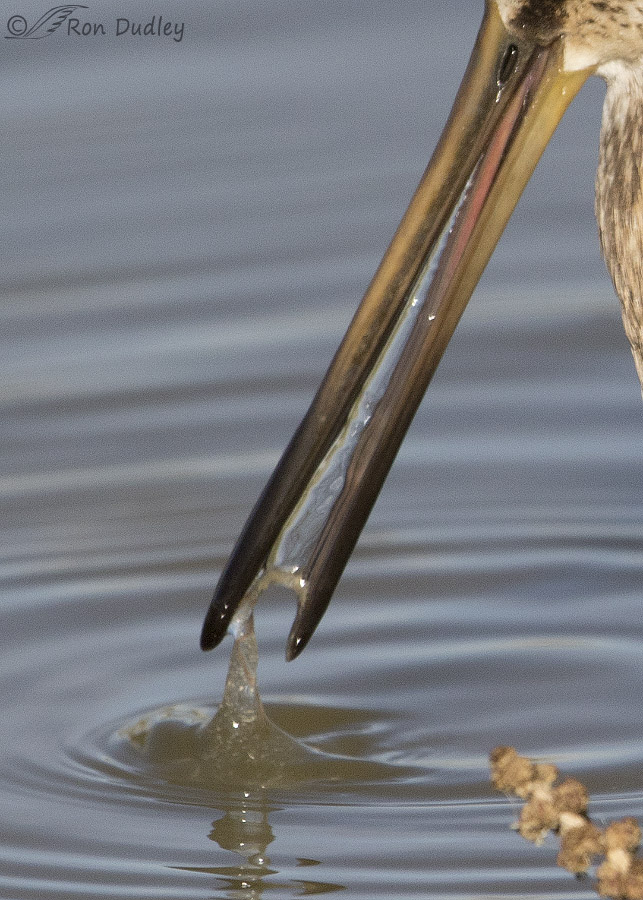
A huge crop of the previous image reveals a tiny larval insect near the end of the bill and we can also see much of that very long slender tongue that aids in moving prey up the entire length of the bill.
The first few times I watched a feeding snipe up close I was puzzled by something I observed. Usually they don’t withdraw their bill from the mud/water before swallowing their food. While probing for prey I could never observe the base of the beak moving (separating) at all, even when the beak was only partially submerged. How could the bird be opening the tip of its bill to capture prey in the mud when there’s not even a slight separation of the mandible and maxilla near the base of the bill during the process?
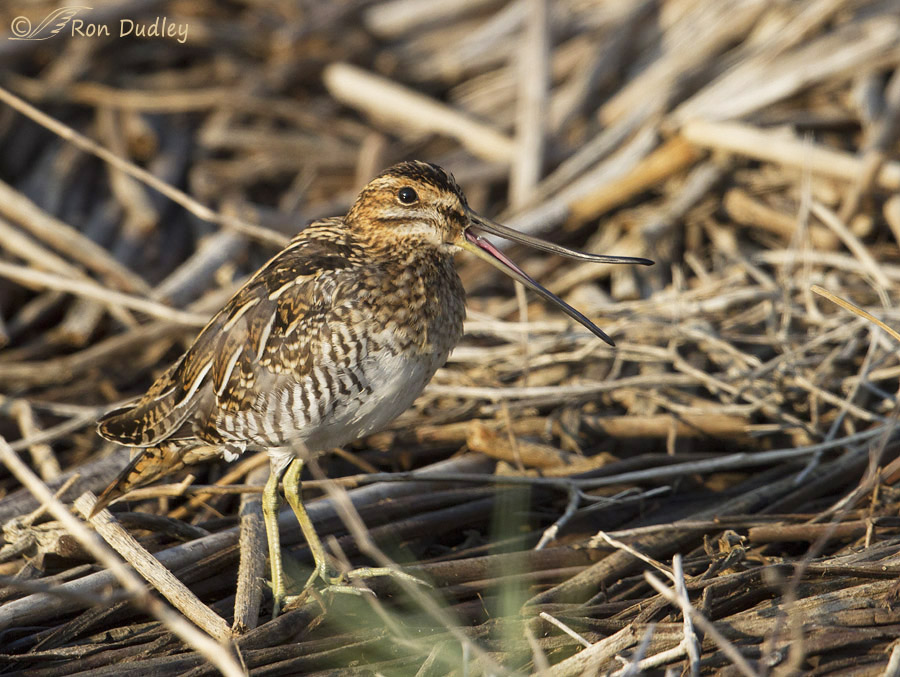
It turns out that snipes and a few other birds that feed in a similar manner have a trick up their sleeves called rhynchokinesis. The beak is far from rigid and the tip is very flexible so that tip can be opened and closed in the mud while capturing prey (where we can’t see it) with no movement at all at the bill’s base.
In this photo, taken several years ago, we can see some of the flexibility of the tip of the bill because the maxilla is bent sharply upwards at its distal end. This allows these birds to open and close the tip of the bill while it’s buried in mud (capturing prey in the process) without opening its entire length to some degree.
And that solved the puzzle of what I had observed in the field.
Ron


Congratulations on getting the Snipe with prey! I would not have suspected that rhychokinesis would have worked when the beak was in the mud. Very interesting.
Thank you, Susan.
Interesting…surprising that any part of the beak is flexible…I heard you say this before, but still find it surprising…
Thanks, Patty. Yes, I’ve covered rhynchokinesis in curlews on my blog before.
Very interesting series, Ron. I am struggling a bit with the snipe being able to get ‘food’ out of the mud. Perhaps I need a better imagination!! That bill surely is long.
Thanks for the photos and narrative.
Ha, I’d struggle a bit if I had to eat that muddy stuff too, Alice. Thank you.
How wonderful to solve that mystery. And what an incredible adaptation. Among many incredible adaptations.
It felt good to discover the explanation, EC. Thanks.
Great behavioral series! Snipes’ elongated faces always make me think of those old gas masks.
Thanks, Marty. I can see why!
A “hinged” ( well, flexible, anyway ) bill tip—-who would have thunk such a thing possible ? Every day, I look forward to the possibility of such nuggets from your blog……thanks !
The birds are the stars here, I only report the “news”, Kris… Thank you.
Thank you.
What a delight it is to wake to your blog! These are outstanding, and with the behavioral information, they’re over the top! So before the sun peeked over the horizon, I’ve learned several new things today. I’m good until tomorrow…LOL!
Here’s a little bit of Who-Wants-to-be-a-Millionaire trivia for you. In ancient, arcane falconry language, a snite is the falcon’s/hawk’s sneeze. I am here to serve
Boy, you’re full of interesting little falconry tidbits, Laura. Thank you.
Yeah, those little bits and a couple of bucks will get me a cup of coffee just about anywhere in the Continental United States, but it all comes from moderating the Cornell Redtail Hawk Cam Chat for five years. You gotta have little redtail/falconry/natural history bits of information to keep people entertained
Of course, the downside is that some days I can’t remember my name! LOL!
Ron, what a wonderful series of photos! I always watch birds and wonder How and Why, so please continue the lessons! I look forward to your blog every morning!
Delighted to hear that, Carol. Thanks.
Sensational series Ron!
Charlotte
Thanks, Charlotte.
Great post! I love your interest in behaviors and physiological features of birds.
I appreciate that feedback, Chris. Not everyone is interested in behaviors so I’m always pleased to learn that at least some of my readers share my interest.
Interesting! Natures adaptations are endless is seems:) Always nice to solve a mystery. Didn’t know for years “snipes” were real as a college thing was to get Freshmen to go on “snipe hunts”…………. The photo’s are great of a pretty bird.
Judy, I was suckered by one of those “snipe hunts” when I was a kid. My Dad got a real kick out if it.
My husband will be relieved to find out that he wasn’t the only one with a dad sending him snipe hunting.
Very cool photo evidence here Ron and find.
Thank you, Ed.